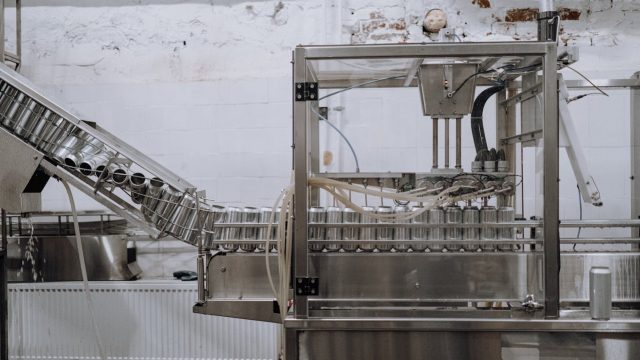Introduction
In food manufacturing, ensuring consumer safety and maintaining product integrity start with the foundation—equipment and materials. The materials that come into direct or indirect contact with food must comply with stringent regulatory standards to prevent contamination, deterioration, or chemical migration. These materials, known as food-grade materials, are a cornerstone of Good Manufacturing Practices (GMP) and are critical for maintaining hygiene, durability, and legal compliance.
This blog explores what constitutes food-grade equipment, how to select the right materials, the regulatory framework governing them, and how compliance directly influences food safety and quality.
What Is Food-Grade Equipment?
Food-grade equipment refers to machinery and tools made from materials that are safe for contact with food. These materials must be:
- Non-toxic
- Corrosion-resistant
- Non-absorbent
- Free from contaminants
- Easily cleanable
Food-grade status is not only about the material itself but also the finish, design, and functionality—ensuring there are no crevices that can harbor bacteria and the surfaces are smooth for easy cleaning.
Why Choosing the Right Material Matters
Choosing the wrong material can result in:
- Product contamination
- Food spoilage
- Allergic reactions
- Heavy metal or chemical leaching
- Legal non-compliance and recalls
Therefore, careful selection aligned with food safety and quality regulations is crucial for every food business.
Key Food-Grade Materials and Their Applications
| Material | Properties | Common Uses |
|---|---|---|
| Stainless Steel (304, 316) | Durable, corrosion-resistant, easy to sanitize | Tanks, pipes, mixers, processing lines |
| Food-Grade Plastics (HDPE, PP) | Lightweight, chemical-resistant, cost-effective | Containers, bins, packaging |
| Silicone | Flexible, heat-resistant, inert | Baking molds, gaskets, hoses |
| PTFE (Teflon) | Non-stick, chemical-resistant, high-temp resistant | Non-stick surfaces, seals, linings |
| EPDM Rubber | Excellent for gaskets and seals in heat or moisture | Seals, O-rings, flexible tubing |
| Glass (Tempered) | Non-reactive, transparent, hygienic | Bottles, storage vessels, measuring tools |
Each of these materials offers specific benefits in different processing environments and should be selected based on contact type, processing temperature, cleaning method, and food type.
Regulatory Framework for Food-Grade Materials
 FDA Regulations (U.S.)
FDA Regulations (U.S.)
- Title 21 CFR: Details substances approved for food contact.
- Example: 21 CFR Part 177 outlines safe plastics for food contact.
- The FDA’s Food Contact Substance Notification (FCN) system is used to regulate new materials.

 EU Regulations
EU Regulations
- EU Regulation No. 1935/2004: All materials in contact with food must not release substances in quantities that endanger human health.
- Framework + Specific Measures are applied to categories like plastics, ceramics, coatings, and rubbers.
 ISO 22000 & FSMS
ISO 22000 & FSMS
ISO 22000 integrates food safety into all aspects of the production chain, including the equipment. It requires that hazards associated with food contact materials are identified and controlled through a food safety management system.
Factors to Consider When Selecting Food-Grade Materials
When selecting equipment materials, food businesses should ask:
1.What type of food will the material contact?
Acidic foods can corrode metals; oily foods may degrade certain plastics
2.What cleaning chemicals will be used?
Some sanitizers can deteriorate certain rubbers or seals over time.Acidic foods can corrode metals; oily foods may degrade certain plastics
3.What temperature extremes are involved?
Heat resistance is crucial for baking, boiling, or sterilizing processes.
4.How long is contact with food?
Longer contact durations require more stable and inert materials.
5.How frequently will the equipment be cleaned?
Repeated cleaning cycles demand a robust, non-degradable surface.
Sustainable Futures Trainings ISO 22000 Training Courses
At Sustainable Futures Trainings, we believe that safe food starts with smart systems and informed professionals. Our ISO 22000 training courses, accredited by Exemplar Global, are designed to:
- Empower your team to design and implement Food Safety Management Systems (FSMS)
- Teach compliance strategies for GMP, HACCP, ISO 22000
- Support audit readiness for global food safety standards

Final Thoughts
Choosing the right food-grade equipment materials is a non-negotiable part of food safety. From preventing contamination to improving equipment lifespan, the material you select determines the effectiveness of your food safety controls.
Understanding the chemical, thermal, and hygienic properties of these materials—and ensuring they meet regulatory requirements—is essential for all food manufacturers.
As consumers demand safer, cleaner, and more sustainable food, the market for compliant equipment materials will only grow. The future lies in smart selection, continuous training, and forward-thinking compliance strategies.
References
- FDA. (2024). Determining Regulatory Status of Food Contact Components. Link
- eCFR. (2024). Title 21—Food and Drugs: Part 110 – GMPs for Food Equipment. Link
- FDA. (2024). Threshold of Regulation (TOR) Inventory. Link
- Apple Rubber. (2023). FDA Approved Seals and Materials for Food Contact. https://www.applerubber.com/blog/fda-approved-how-to-select-the-best-material-for-food-grade-applications/
- CSi Designs. (2022). What Is Food Grade? Key Terms and Applications. https://www.csidesigns.com/blog/articles/what-is-food-grad
Disclaimer:
This article is intended for general educational purposes only. Always consult with food safety professionals or regulatory authorities before selecting equipment materials for food processing use.
This article first appeared on Sustainable Futures Trainings’ website and is published here with permission.


[…] tetapi juga menyentuh spesifikasi teknis material dan desain peralatan produksi. Menurut pembahasan dalam situs berita The Auditor Online, pemilihan material stainless steel yang tepat dapat berdampak langsung terhadap keberhasilan audit […]